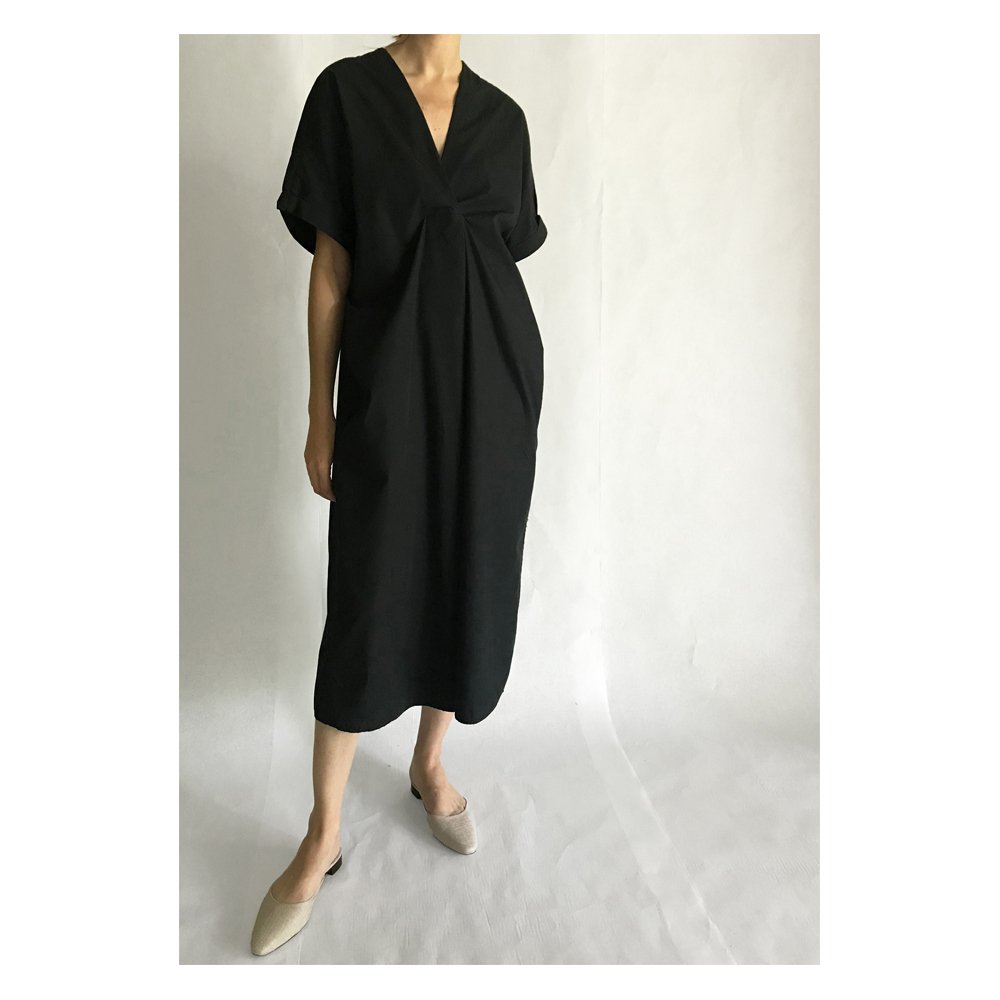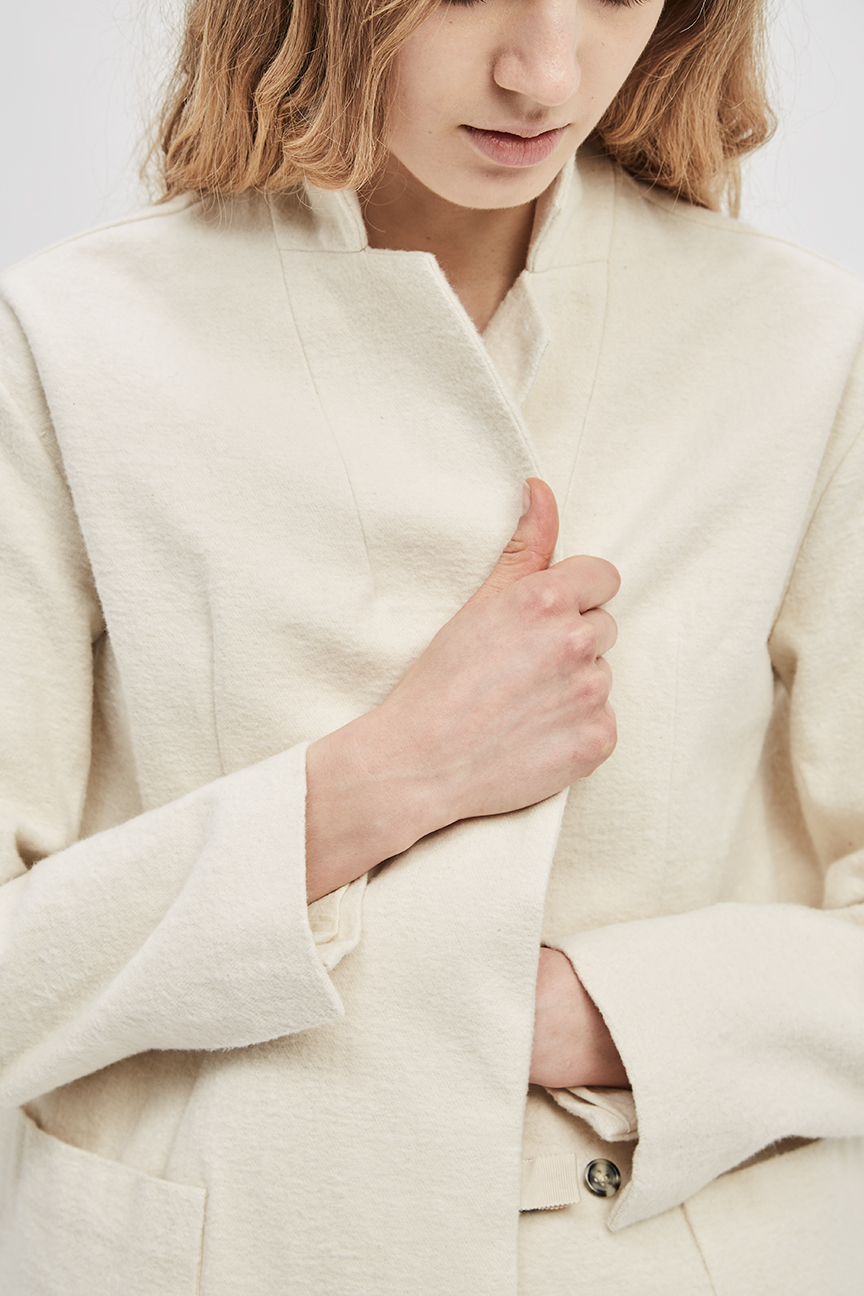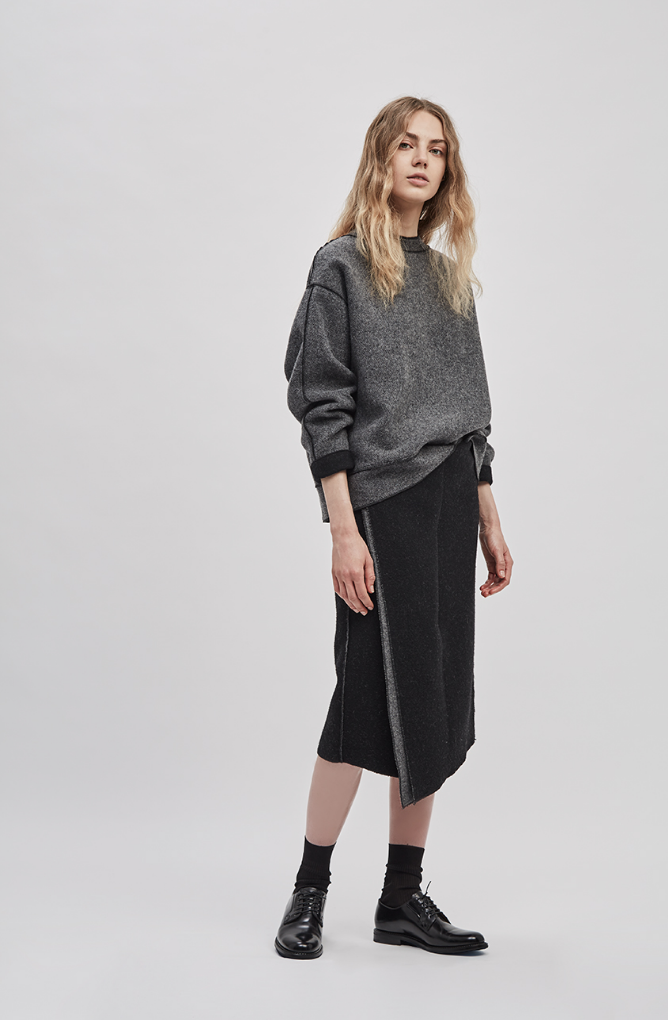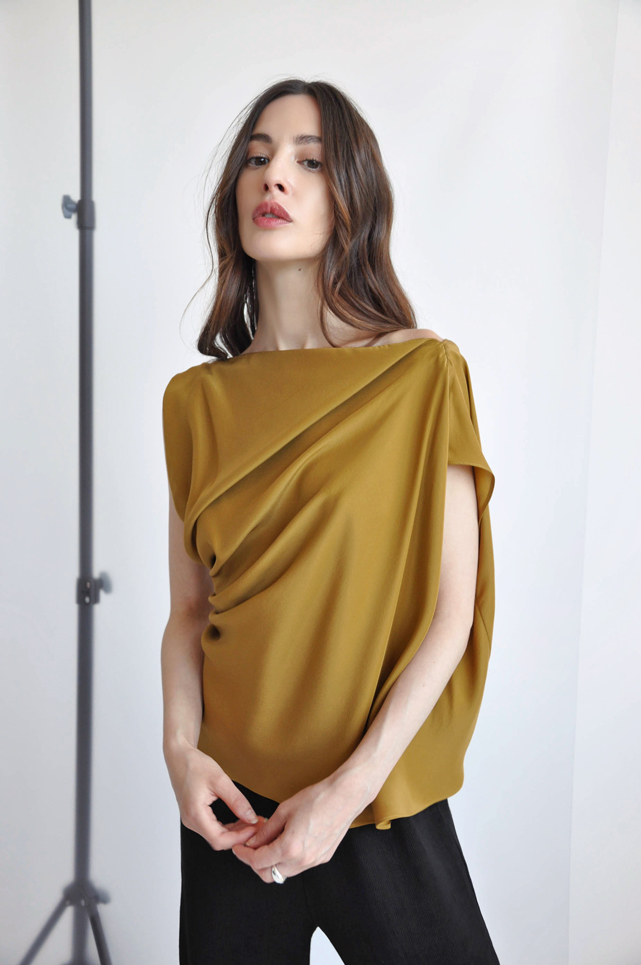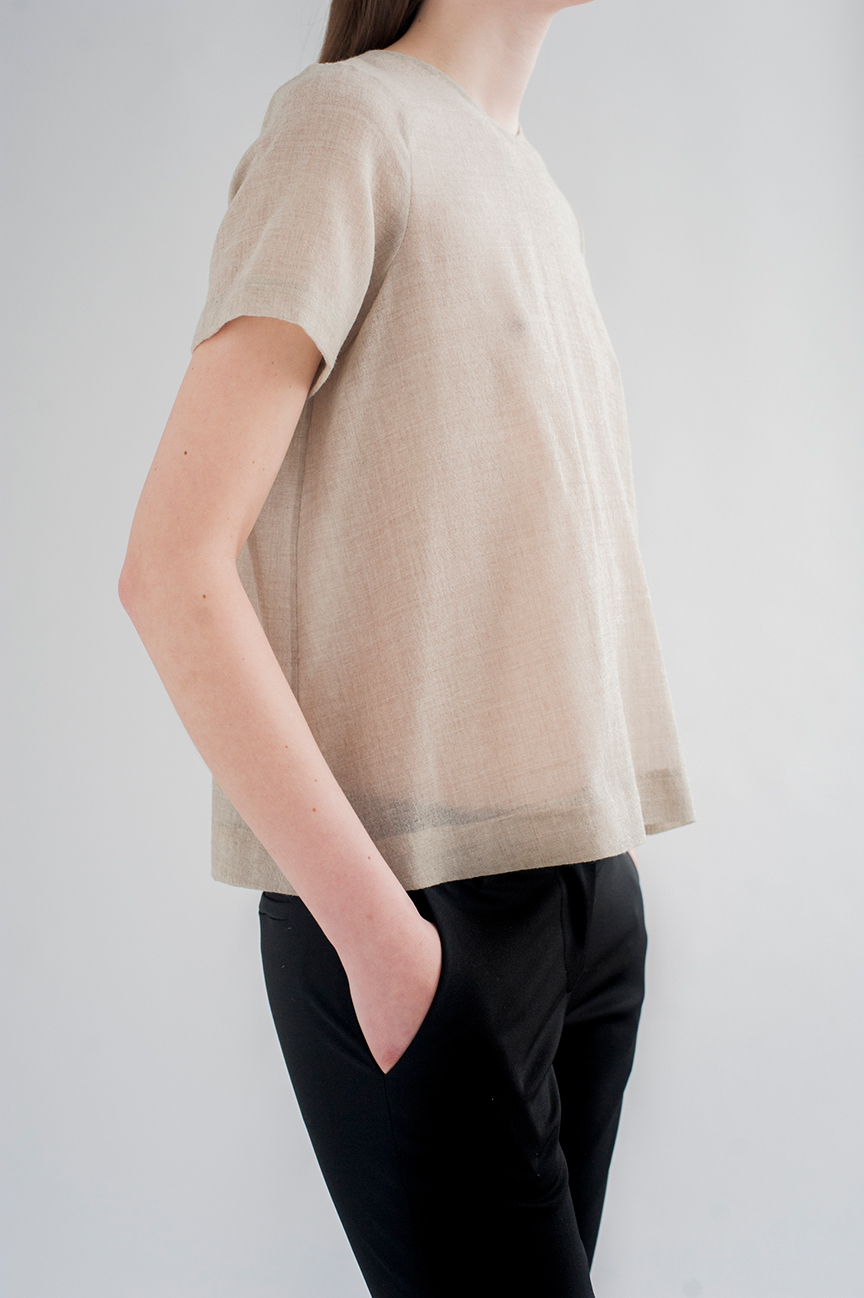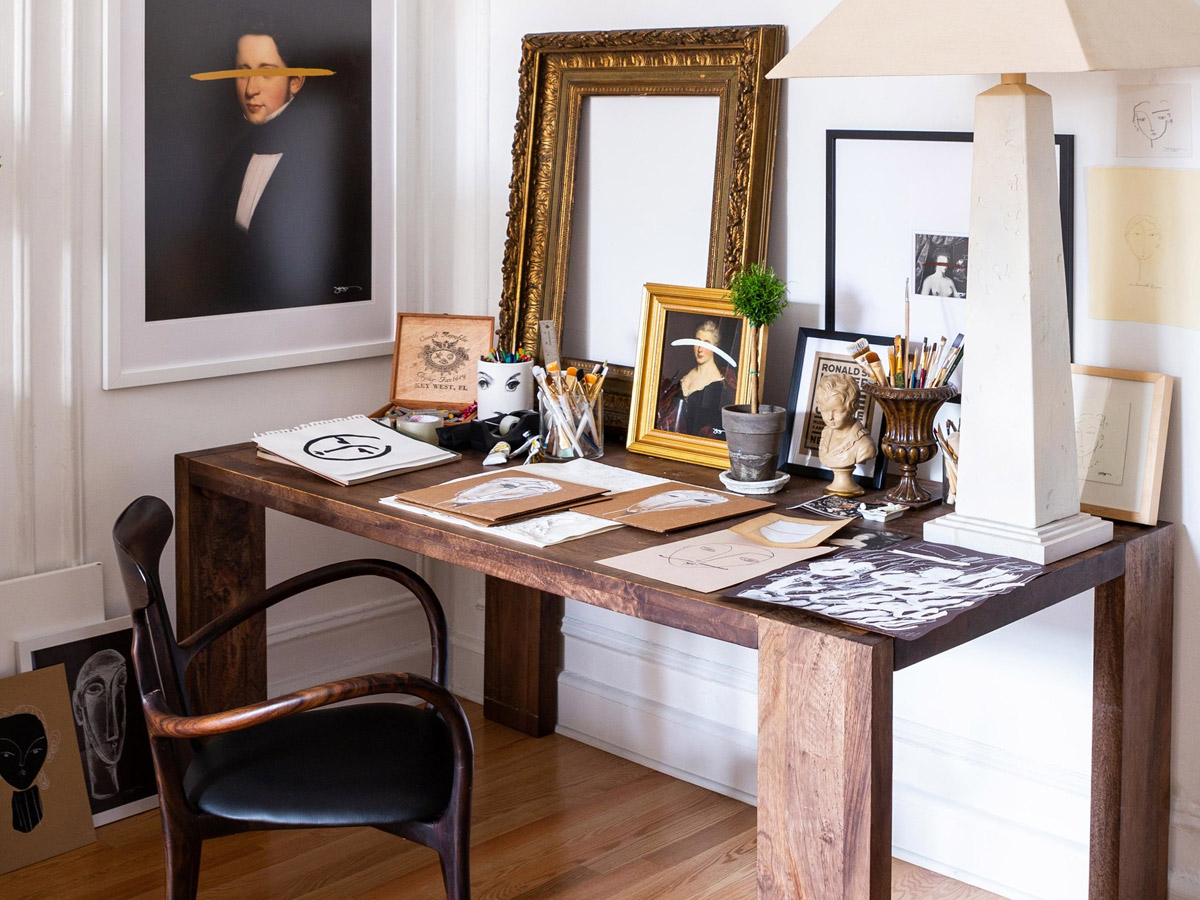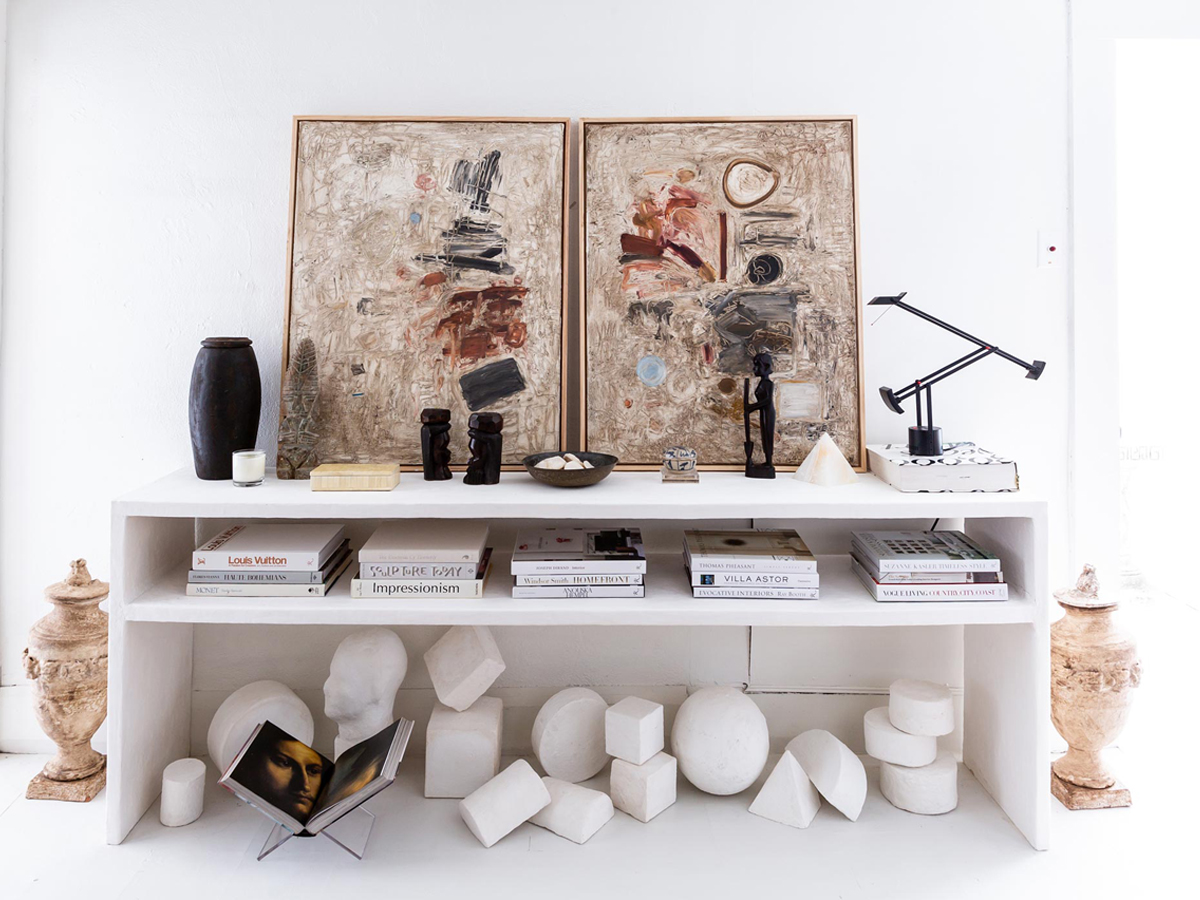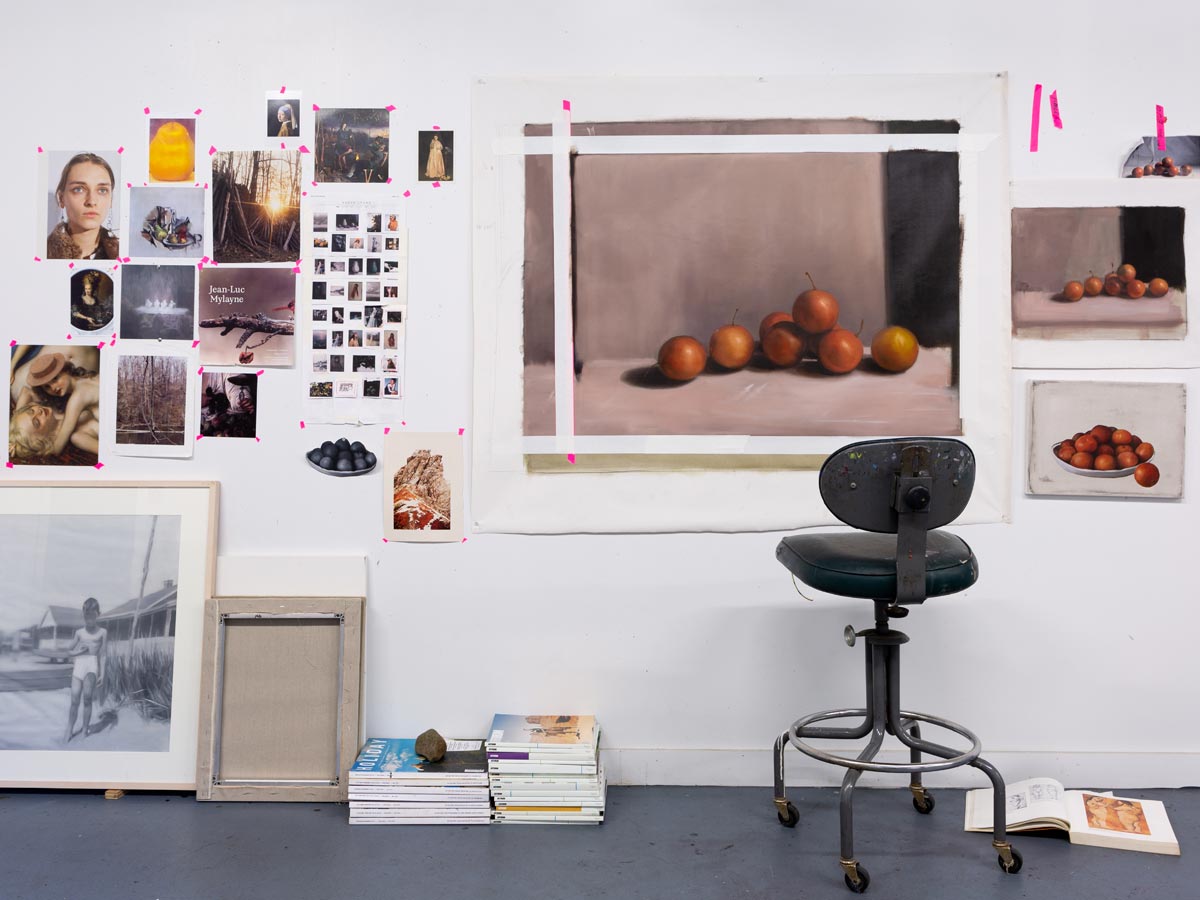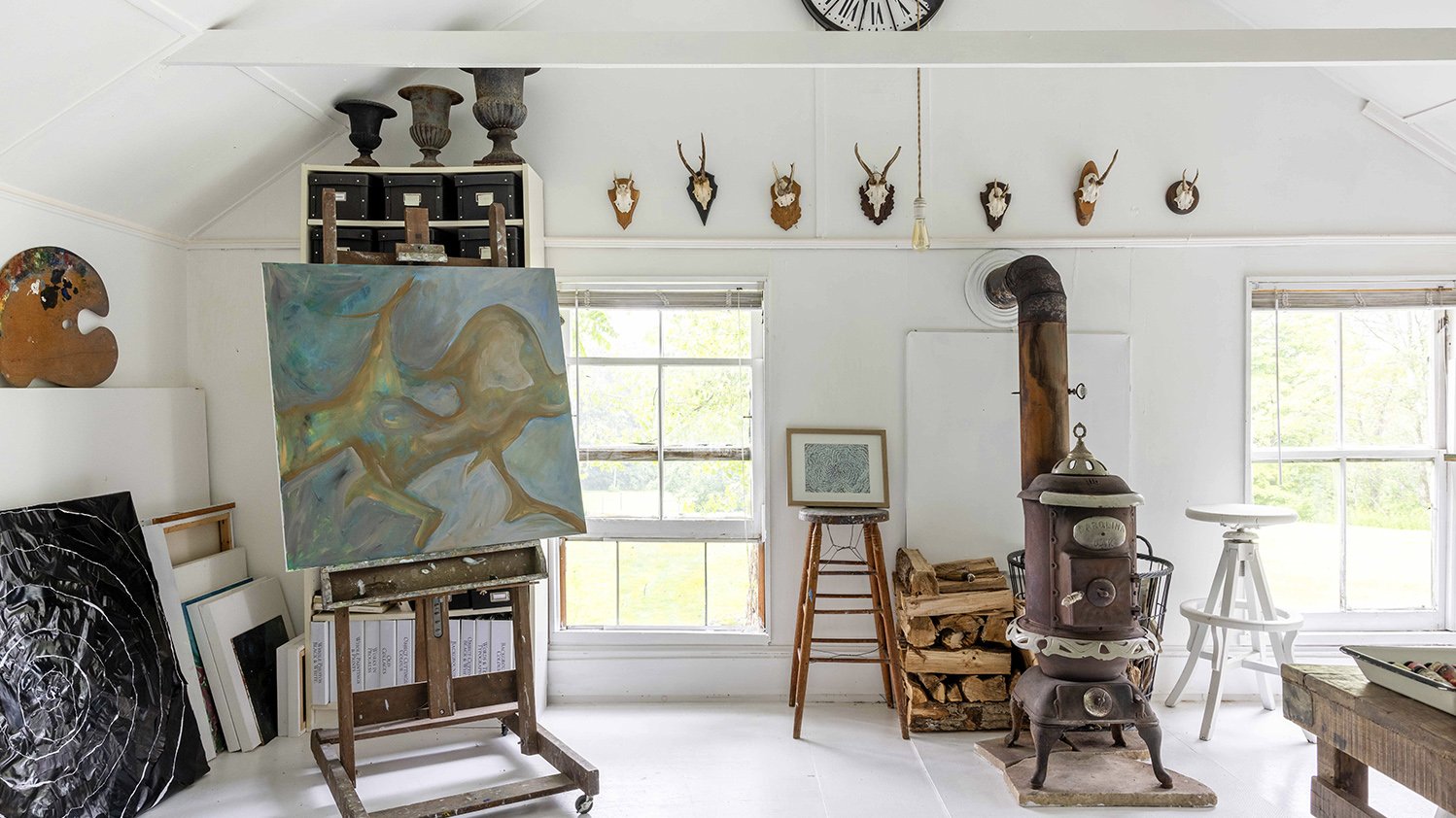DE SMET’s Sustainable-Fashion Studio

Written by S. Pajot | Photographed by Marta Xochilt Perez | Produced and Art Directed by Michelle Adams | DE SMET Lookbook Photographs by Valeria Castillo, Adam Levett, and Sirui Ma
Our product recommendations may include items from our sponsors and/or contain affiliate links, which means we may earn a commission when purchases are made. Rest assured, every item is genuinely chosen by our editorial team.
“I don’t want to have unwanted clothing sitting around. I’ll never have stock or inventory,” insists Christina De Smet, the founder and designer behind sustainable, ethical fashion brand DE SMET. “I create one full year at a time, I release one style a month, and once a customer orders a piece, that’s when I have it made [in New York’s Garment District], and only then,” she says, explaining her line’s development, launch, and manufacturing concepts. “I just refuse to make clothing that is not worn because there is enough on Earth right now to clothe everyone for the next 100 years.”
Christina De Smet and her rescue cat, Miles, in the Crown Heights, Brooklyn, apartment and studio that she shares with her husband, Dermot Reddan.
She has been running DE SMET and creating her made-to-order, minimal-waste garments for the last two years. But the project is actually the product of 10 frequently unglamorous years in the fashion industry, as well as a lifetime spent developing her own honest artistic vision.
De Smet earned an early art education at the elbows of her hardworking, creative grandfather and grandmother, the elder De Smets. Born and raised in Grosse Pointe, in the metro Detroit area, she would leave for Northern Michigan every summer to stay with her grandparents, “and we would just have a little creative vacation,” she says. “My whole life, growing up, that’s what I would do.” Her grandfather was a retired firefighter who left school for work after the eighth grade, but “he never stopped learning,” she explains. “He would paint and draw, he did beautiful stained glass, he would sculpt, he did gorgeous woodworking, he taught himself how to cane chairs.” And her grandmother: “She taught me to watercolor, sketch with charcoal, and how to sew.”
De Smet finished four years at Michigan State University before moving to France for a year of postgraduate studies at the Paris campus of Parsons School of Design. “And then I moved to New York, without a job,” she chuckles. “I just made the leap, and said, ‘Well, I won’t find a job in fashion if I don’t live there.’” It took several months of job hunting, and declining any offers that she didn’t consider creative enough (“My mom thought I was nuts,” De Smet says), but she finally landed a position as an assistant designer at “a big company.”
But it was no dream job. “You know, I always knew about fast fashion, but I didn’t realize how detrimental the fashion industry is to our environment,” she admits. Hundreds and hundreds of sample garments are made, but only a tiny fraction ever ends up in stores. “There was all this waste. . . . The mills have fabric minimums, so even if you only wanted to make one top, and you only need three yards to make one top, . . . you would need to manufacture 30 yards of this one fabric.” She pauses, dismayed. “So you’d end up with 27 yards sitting there until maybe you tried to use it for other prototypes.
“Nothing’s quite perfect, and I think that’s OK; it’s like the Japanese concept of wabi-sabi,” De Smet says of the studio. “But we don’t get any direct sun, and letting as much natural light in as possible was very important. So I was like, ‘We have to paint it bright white!’ and it made such a difference.” She also brought in “a plush, white wool rug that really brightens everything up.”
“All of this unwanted clothing and wasted fabric, and that’s just in the sampling process,” she adds. “The experience desensitizes you to clothing, until it doesn’t seem like anything is special anymore; it’s almost just garbage, because you’re making things so fast, and you’re so sick of it by the time you’re done working on it.”
At a certain point, it was too much for De Smet to bear. “I just didn’t feel creatively fulfilled anymore, and we were working 80-hour weeks, but we weren’t saving lives,” she says. “I had stayed at that same company for five years, and moved up the ranks as much as I could, and that was it. I needed to leave.”
The design process always begins with me asking, ‘What do I wish I had in my wardrobe? What am I missing?’
Draping on the dress form: that’s where my best ideas come. I might re-drape something 30 times before it becomes anything real.
When she quit her job, De Smet expected to eventually return to the mainstream fashion world, only in a better job with a more responsible company. “A lot of my friends in the industry go through this, too,” she points out. “Everyone gets burned out, takes a year off, and that’s what I thought I would do: just take a year off, and then get back into it.” Instead, she ended up with her own line of sustainable clothing, inspired by a “shopping diet” that she’d developed for herself as a small, personal way to confront the thoughtlessness and wastefulness of the average fashion consumer’s shopping habits. And she definitely counted herself among those irresponsible shoppers.
“I decided to only allow myself to buy one new piece of clothing or one accessory every month,” De Smet explains, “which to someone who doesn’t shop a lot doesn’t sound like a hard task, but I had to get dressed for work in the fashion industry every day, and I used to buy a couple of things at this store and that store, and four or five inexpensive things at a single sample sale. So when I decided to limit myself to only buy one piece a month, I became a much more conscious consumer.”
“We had Dermot’s dad, who’s a retired master carpenter, build us a dining table that doubles as a worktable, and the bench and stools that go around it,” De Smet mentions, gesturing toward the custom furniture that fills the studio. “I especially love the bench because it’s super versatile; I use it for seating, for props, for anything you can think of. It was important for me to have pieces that are minimal, functional, multipurpose, and beautiful. Kind of like the clothing I make.”
Shown above: Out of Shape by Anna Ullman.
And her plan led directly to the concept that became DE SMET. “After a while of being on the one-piece-a-month diet, I thought, Wait, why don’t I do a collection based on that idea? But then allow people to buy those pieces forever,” she recalls. “Everyone I told thought that I wanted to release one piece a month to create hype around the launch of a new piece, but that was not my intention. I didn’t want to encourage people to buy more; I wanted people to be more mindful about their consumption and give them the idea that they only needed one new piece a month, at most.”
She wanted to help customers slow their shopping, push them to take the necessary time to make educated decisions about their purchases, and suggest that less buying could be better for their wardrobe as well as the planet. “I started to think that maybe we needed to retrain consumers in order for them to appreciate clothing and the environment again,” De Smet says. So she began sketching and draping, thinking and planning, working for months and months out of the apartment and studio in Crown Heights, Brooklyn, that she shares with her husband, graphic designer and illustrator Dermot Reddan.
The DE SMET ideal: “A dress that I can wear to the beach, and then dinner that night, and then with tights in the winter.”
That was 2014. The line launched in 2016, and there have been three 12-piece, 12-month collections created so far. (The last eight pieces of the most recent collection are still awaiting release.) And with every new collection and every new piece of clothing, De Smet’s aim remains the same: developing a garment that’s ethical, sustainable, versatile, timeless, and personally field-tested by the designer.
“I’ll make a proto sample and I’ll wear it for three to six months to see if I can wear it through summer, fall, winter,” she explains. “And during those months, I might make a few fit alterations and some new samples. Maybe I’ll make it in a different fabric to see if a different fabric is better. I just really try to perfect it.
“Then the final, best test is when I put a new, finished piece in my closet and see if I go to it a lot when I’m getting dressed every day,” De Smet says. “Once it’s in there and it meets the approval process, then I’m like, ‘OK, this is finally good enough to present to the world.’”



